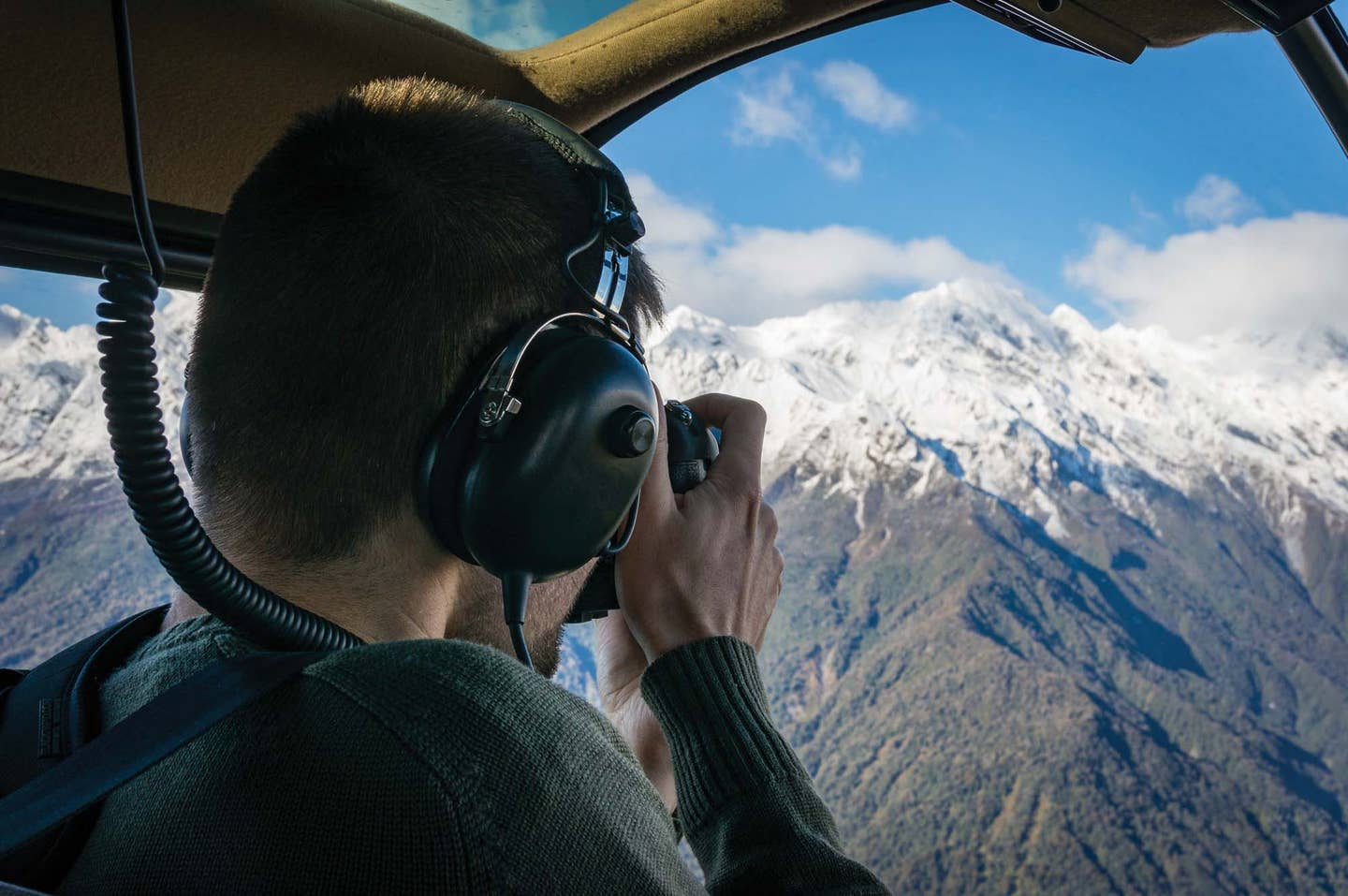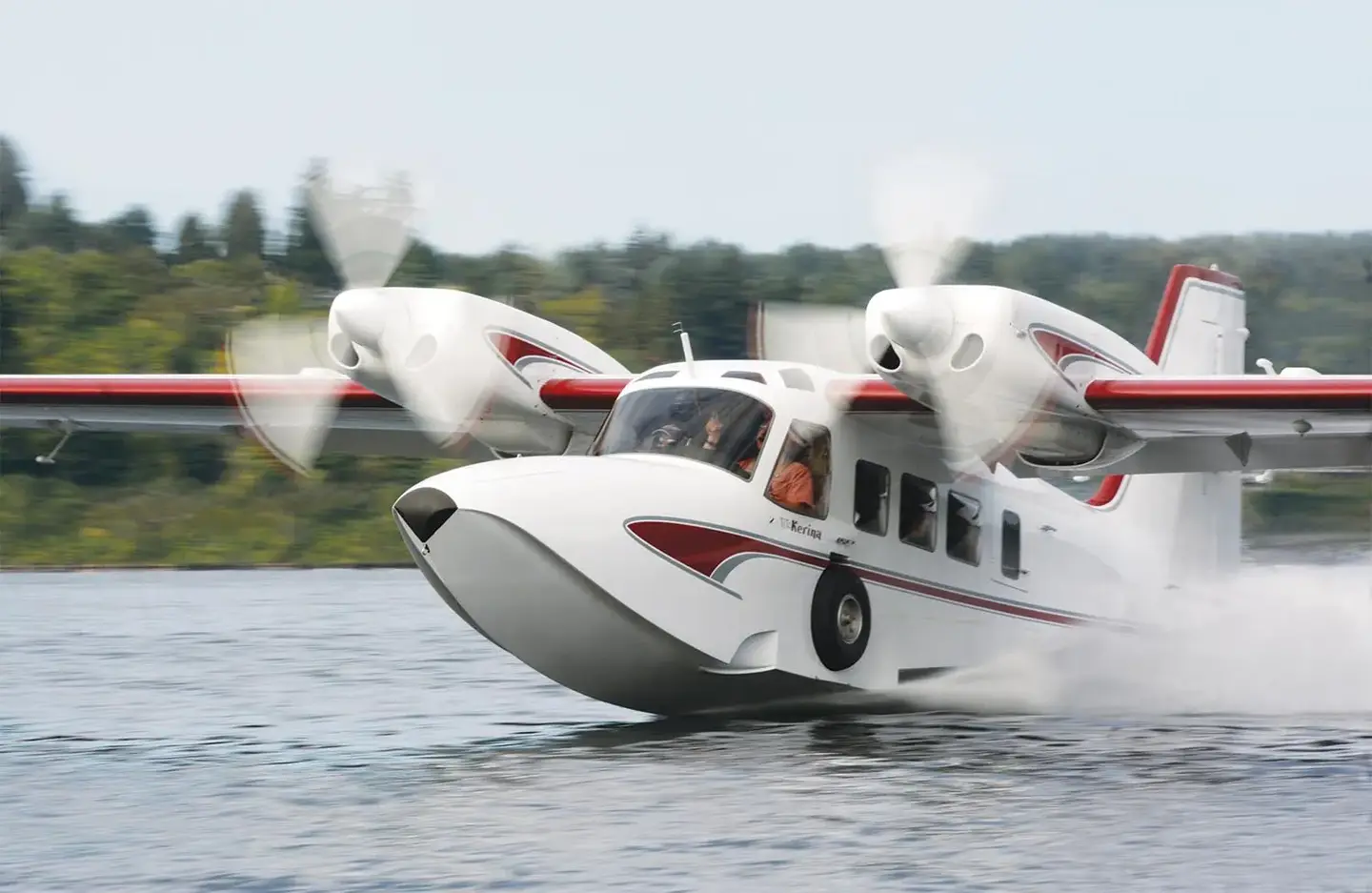 |
Gyroplanes are one of the last remaining secrets in the aviation community. Despite the fact that gyroplanes (also called gyrocopters and autogyros) first appeared in 1923 and enjoyed some years of popularity, few general aviation pilots know much about them. Helicopters took over the scene during World War II, and most people forgot about gyroplanes, though magazines like Popular Mechanics ran classified ads with gyroplane plans during the '50s and '60s. In the late 1980s, an enormous gyroplane renaissance happened with regard to technical developments, and a new era was born. Today, in many countries, gyroplanes are everywhere, and that surge of popularity is finally coming to our own GA world. Gyroplanes are, in fact, alive and flourishing.
There's one critical fact that must be understood before any meaningful discussion of gyroplanes can take place: They're not helicopters. Gyroplanes share much more with fixed-wing aircraft than they do with helicopters.
The rotating wings of a helicopter (the "rotor") are driven directly by an engine. Those rotors move great masses of air downward, allowing a helicopter to hover, and those same blades also create forward thrust. The rotating wings of the gyroplane, however, are free spinning and aren't connected to the engine. They provide lift as they spin freely through the air, like those little propellers you get at the fair with a dowel through them that you spin in the palms of your hand, and they fly up and away. Not having engine-driven rotors means gyroplanes can't hover. Gyroplanes use a "pusher" propeller for forward thrust.
This single quality provides a lot of advantages over both fixed-wing aircraft and helicopters. First, a gyroplane can fly slower than an airplane and won't stall. A gyroplane can almost hover because it needs very little forward speed to stay in the air (about five to 10 knots). That means that an engine failure in a gyroplane is a nonevent. The craft will float down in autorotation like a parachute. A gyroplane flies in permanent autorotation. That virtue makes gyroplanes extraordinarily safe.
A gyroplane has no torque because its blades are powered by air, so no tail rotor is needed. At the same time, most gyroplanes can fly as fast as a helicopter or GA airplane (about 100 knots) and can be flown in winds that would ground a helicopter or GA aircraft. Thus, the gyroplane is an exceedingly stable flying platform, unlike helicopters. Also, gyroplanes are true STOL (short takeoff and landing) aircraft that can land in 50-100 feet (remember, they don't hover or take off vertically like helicopters). Gyroplanes have very high wing loading because their rotor blades have little total area, relying on rotational speed, rather than size, to generate lift. This gives them exceptional utility for a variety of tasks.
Last, gyroplanes can be purchased and operated for a fraction of the cost of GA aircraft and for about 10% of the acquisition cost of a helicopter. Helicopters are famous for their vast mechanical complexity with their host of moving parts that rely on each other to operate properly. A gyroplane, however, will provide 90% of the capability of the helicopter for 1/10th the price. The gyroplane's simplicity makes it as easy to maintain as a motorcycle. Also, you can fly them under sport-pilot rules with a "driver's license" medical. Combine non-stall design with extraordinary maneuverability, near-hover slow flight, unmatched stability, good speed and low cost, and you can see why those who have discovered gyroplanes are smitten.
 Aerotrek ELA G8 Cruser |
Aerotrek
www.aerotrek.aero
ELA G8 Ranger. Aerotrek markets three gyroplanes manufactured in Spain by ELA Aviacion. The European market has been the leader in innovation in gyroplanes, and these are some of the finest. The Ranger is an open-cockpit gyroplane equipped with larger tundra tires, and is good for rough or soft fields and great for flight training. It includes a precision-welded stainless-steel frame, composite tail feathers, winglets for excellent stability and a two-blade carbon-fiber rotor with aluminum spar. It's factory built, balanced and test flown. The Ranger is powered by the Rotax 912ULS 100 hp engine. Price: $57,850.
ELA G8 Cruser. This is a nicer two-seat, open-cockpit gyroplane suitable for touring, aero-exploring, recreation and flight training, as well as practical field applications. The Cruser has a high-performance three-blade DUC Windspoon composite prop, along with deluxe padded seats with four-point seat/shoulder belts, a steerable nosewheel and the Rotax 912 ULS 100 hp engine. Price: $59,950.
 Aerotrek ELA G10 Eclipse Aerotrek ELA G10 Eclipse |
ELA G10 Eclipse. Just unveiled at Friedrichshafen 2014, the ELA G10 Eclipse is a fully enclosed gyroplane that's readily convertible to an open-cockpit gyroplane. The Eclipse has dual enclosed storage compartments and is especially suitable for touring on long cross-countries or for colder climates (it has a cockpit heater). Boasting excellent visibility and an auto-like interior, it appeals to those accustomed to enclosed aircraft. Price: $91,950.
 Cavalon |
Airgyro
www.airgyro.com
MTO Sport. The MTO is a jeep for the sky, and for those who like to feel free and open while they fly. A full fuselage and tall windscreens provide quite a bit of protection from the elements. The MTO Sport has been flown from sand, dirt, grass and water (with optional pontoons). It's ubiquitous in Europe (it's manufactured in Germany) and is one of the lowest-cost two-seat gyroplanes out there. More of these gyroplanes have been sold around the world than any other gyroplane from any other manufacturer. Price: $66,450.
Calidus. Looking like something out of a James Bond film, the Calidus is an aerial sports car. Powered by the 115 hp turbocharged Rotax 914, the Calidus will cruise at 100 mph burning just 4 gph, turn on a dime and go long distances in comfort. Tandem seating, dual controls, a wide cabin and excellent visibility are hallmarks of the Calidus. Garmin GPS and weather are an option. Price: $90,000.
Cavalon. The Cavalon has won a slew of awards, and it looks as good as it flies. A unique feature is the side-by-side seating and covered carbon-fiber fuselage, so long trips are a pleasure for both pilot and passenger. The Cavalon includes fully adjustable heated leather seats and plenty of space behind the seats for baggage. It will give you 100 knots cruise burning about five gph. Price: $111,000.
 Cavalon panel |
ArrowCopter
www.arrow-copter.com
AC20. The Austrian-built AC20 is in the luxury category of the gyroplane world. Distributed in the U.S. by North American Gyro, the AC20 is unlike other gyroplane designs on the market. Instead of a tubular steel frame, the sexy AC20 is built from composite materials, giving it smooth, flowing lines. Its innovative wing-landing gear combination functions as a lifting device, gear suspension and fuel tank. With a 120 mph cruise, the AC20 is aimed at the performance market. Price: $160,000 (base price).
Sport Copter
www.sportcopter.com
Lightning. For pilots who want minimal investment and are okay with letting it all hang out in the breeze, the Sport Copter Lightning fits the bill. A single-place, open gyrocopter, the Lightning is powered by the 52 hp Rotax 503 engine. The spider-like airframe is built of large-diameter aluminum tubing along with rough-field suspension and the patented "Roto-Control" system. A step-by-step video is included with the assembly manual. Lightning can be assembled in 50-60 hours with basic hand tools and will give you a gyroplane that will cruise at 63 mph. Price: $21,995.
Sportcopter II. Manufactured here in the U.S. in Oregon, the Sportcopter II is another enclosed gyroplane with sleek lines and all-weather capability. The roomy 49-inch-wide cabin and two-seat side-by-side configuration make it feel larger than it is. Qualifying as an LSA, the Sportcopter II is powered by a Lycoming IO-360 engine and features a triple vertical stabilizer/rudder system that provides excellent stability in slow flight maneuvering and high-speed cruise. Price: $84,995.
Vortex M912. Looking more like a traditional gyroplane, the M912 is manufactured in Oregon by Sportcopter. It was created as something of a flying workhorse for mustering (the equivalent of our herding) cattle in Australia, hence the "M" for "mustering." Built for rough-field and utility flying, the M912 features a longer tail boom, larger horizontal stabilizer, outboard fins and high-performance suspension. Built from 4130 steel tubing, this is a single-place gyroplane that can be flown out in the open or with its partially enclosed body. Price: $65,195.

Subscribe to Our Newsletter
Get the latest Plane & Pilot Magazine stories delivered directly to your inbox






